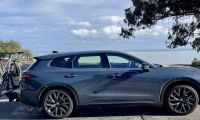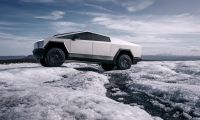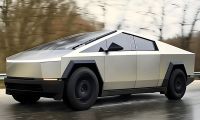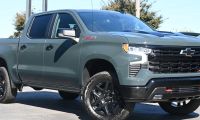Tesla Open Sources Its Technology
On June 12, 2014, Elon Musk said there was a wall of Tesla patents in the lobby of its Palo Alto headquarters. That is no longer the case. They have been removed, in the spirit of the open source movement, for the advancement of electric vehicle technology.
He went on to say that Tesla Motors was created to accelerate the advent of sustainable transport and that if we clear a path to the creation of compelling electric vehicles, but then lay intellectual property landmines behind us to inhibit others, we are acting in a manner contrary to that goal.
He then said Tesla will not initiate patent lawsuits against anyone who, in good faith, wants to use our technology. The primary reason for this is that it is impossible for Tesla to build electric cars fast enough to address the carbon crisis. I would add that Tesla can't build them fast enough to meet all the customer demand either - other companies must build EVs.
Companies have been helped by Tesla's patents being opened. It should be a goal to try and understand technologies behind Tesla's batteries and Supercharger network. I also believe other EV companies and charging stations should adopt the charging connection that Tesla uses.
You may also be interested in:
- Tesla Model S Plaid review after 20,000 miles.
- Interesting EV Findings From a University of Michigan Study.
- Tesla Generation 3 vehicles will end gas and EV companies.
Tesla Copy Cats
Xpeng was founded the same year that Tesla opened their patents in 2014. They were the first company to take Tesla up on the challenge of utilizing the open source technology. On October 24, 2017, it was announced that this Tesla-inspired Chinese EV startup launched with an all-electric SUV using open-source patents.
When you look at the front of this vehicle, it looks a lot like the Model X. Xpeng has an X for its logo on the front of the car. This is the G3. It could just be a coincidence, since the G3 doesn't have falcon wing doors and looks a little different in the rear.
The G3 is using the same 18650 battery cell format that Tesla is using, but Xiaopeng actually uses Samsung Lithium-ion cells, unlike Tesla's custom Panasonic cells. Tesla currently uses 18650 cells for the Model S and Model X battery backs and 2170 cells for Model 3 packs. The Model 3 RWD uses LFP batteries which can be charged to 100%.
The interior looks very similar to Tesla, with a very large glass windshield and a center screen that is vertical in the middle. At first glance, it just looks like a Tesla, with the steering wheel and screens in the exact same places. The buttons on the steering wheel are different. The instrument cluster display behind the wheel is basically a 95% copy of Tesla's.
Xpeng took it to another level with an employee who was sued by Tesla for stealing the source code for Autopilot. He admitted to taking the Autopilot code in 2018. The assumption was that he used it at Xpeng. The former employee said he didn't do it for that reason.
The Xpeng website is a near clone of Tesla's website. When you browse through the vehicle that Xpeng has, you have to look closely to see the differences.
There are copies of Tesla's trucks. Someone made a Cybertruck clone that is gas powered with a similar interior. That was a fun project and not meant to be mass-produced.
In China, Neuron EV was created and is looking to mimic Tesla's Cybertruck and Semi. The CEO of Neuron said that both trucks are a representation of Neuron's product philosophy of value through simplicity and functionality. They're easy to use, universally relevant, and updatable to the latest technology for efficient waste reduction and versatility optimization. It seems most of the cloning of Tesla is being done in China.
What do you think of these Tesla copy cats? Should they be allowed to copy Tesla?
In Related News: Tesla gives big incentive in Germany - it now qualifies vehicles for BIG EV incentive
Watch this video for more information, from Ryan Shaw:
Leave your comments below, share the article with friends and tweet it out to your followers.
Jeremy Johnson is a Tesla investor and supporter. He first invested in Tesla in 2017 after years of following Elon Musk and admiring his work ethic and intelligence. Since then, he's become a Tesla bull, covering anything about Tesla he can find, while also dabbling in other electric vehicle companies. Jeremy covers Tesla developments at Torque News. You can follow him on Twitter or LinkedIn to stay in touch and follow his Tesla news coverage on Torque News.












